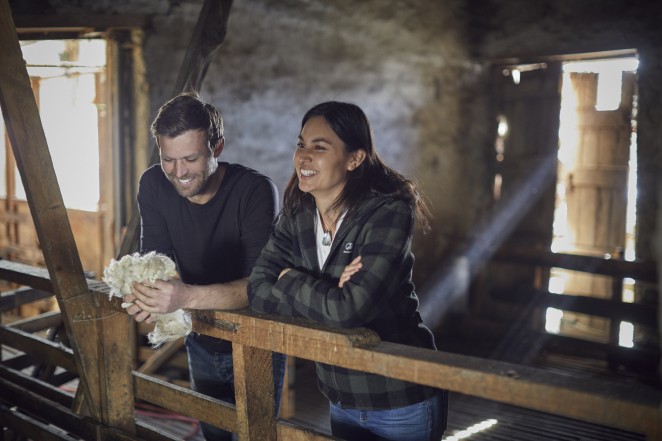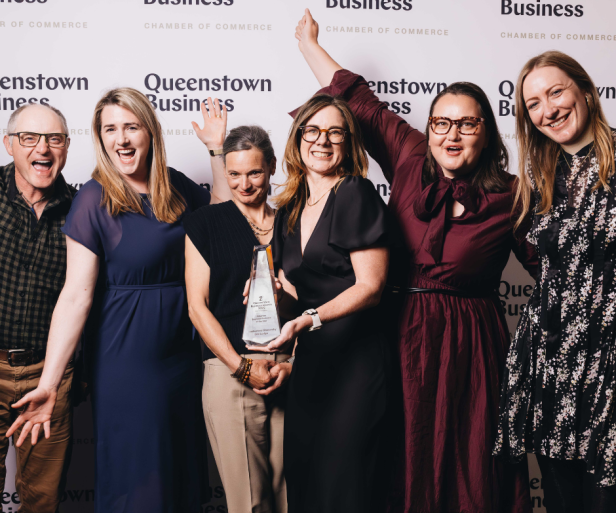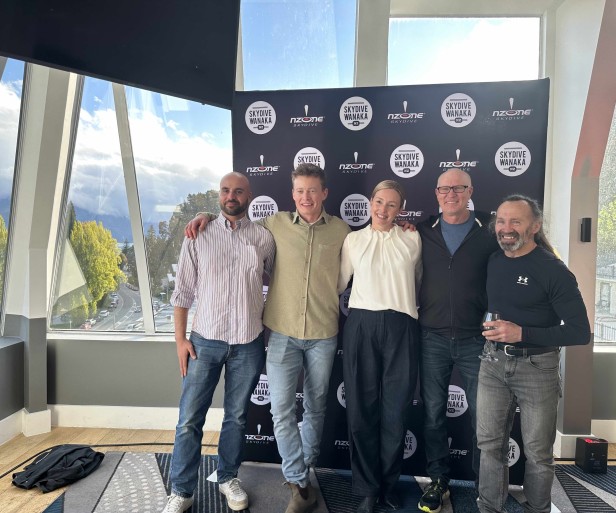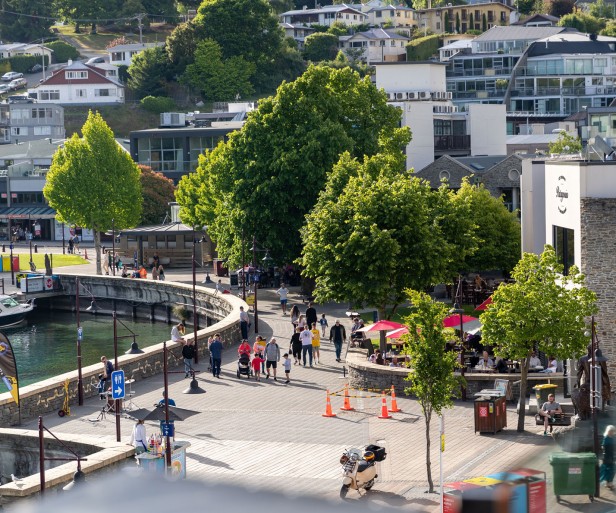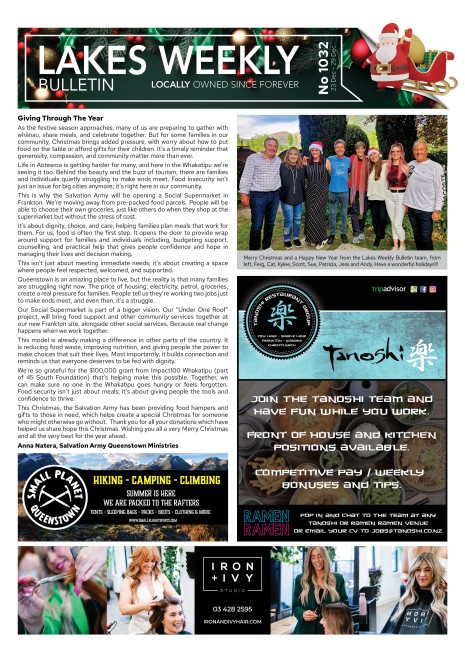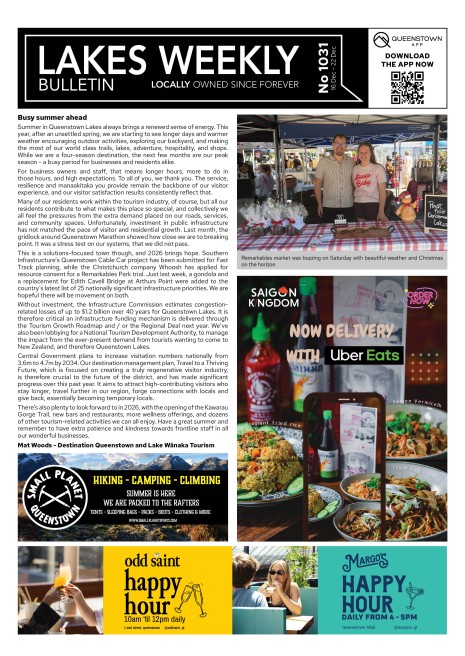Regeneration on Royalburn
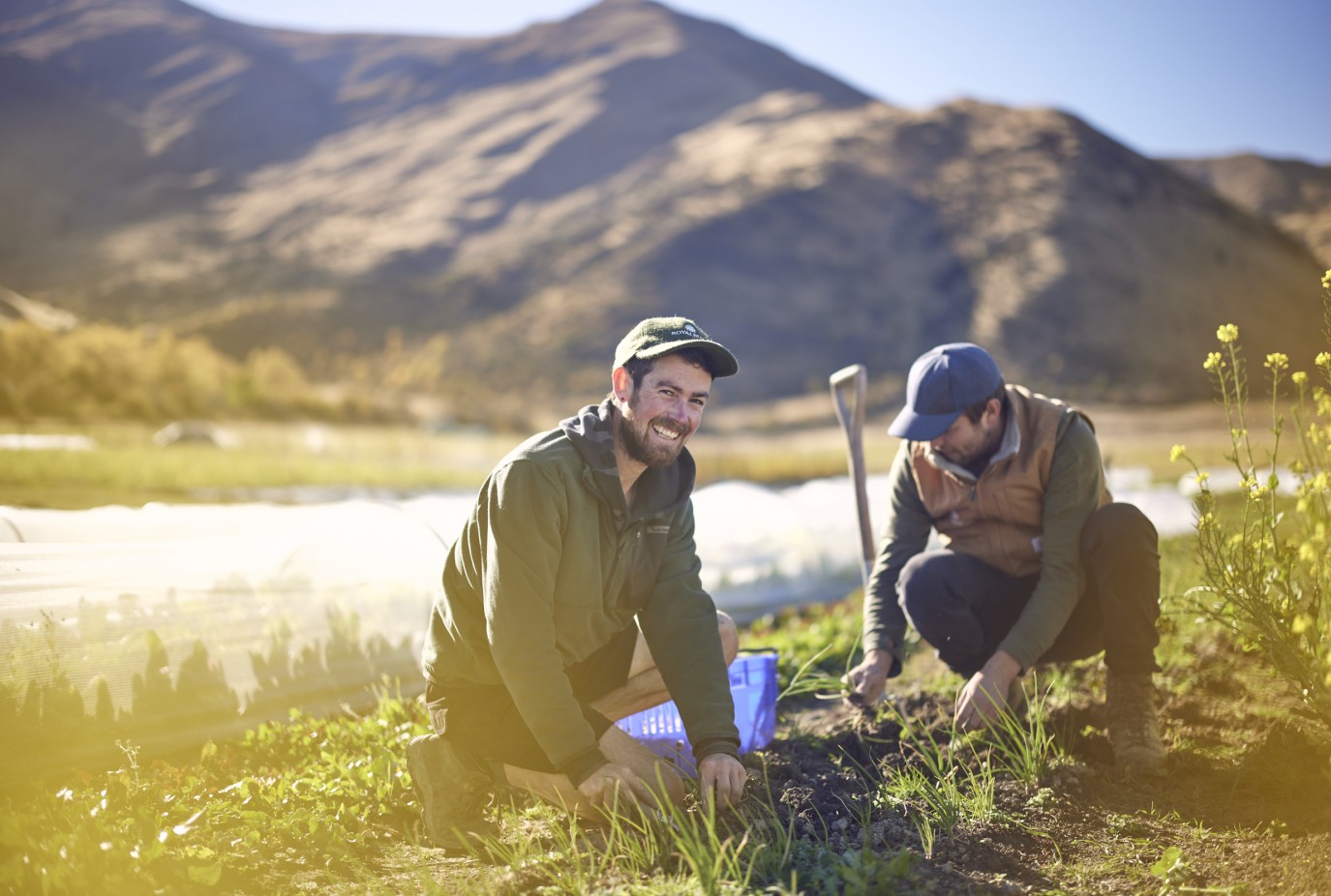
The quest to farm regeneratively and produce food on scale has become a labour of love for New Zealand celebrity chef and TV presenter Nadia Lim and husband Carlos Bagrie, who hails from a generation of Wakatipu farmers, working their 460ha Royalburn Station on the Crown Terrace.
After producing traditional barley crops and sheep for the first two seasons the couple branched into some brave experimental crops and trials 18 months ago, incorporating regenerative farming practices to boost soil health, longevity and production.
The Royalburn team grow crops in rotation such as sunflowers that help aerate the soil, add back carbon and boost microbiological activity. Peas are another huge crop – a couple of hundred acres of peas have been sown on the farm this season, and these provide natural nitrogen to the soil. Phacelia – a beautiful blueish flower related to borage, also grows on mass, and is a great soil conditioner and food source for the bees, says Carlos.
“We’re still famous up here for our cereal crops – wheat and barley, and we supply Altitude Brewery which makes for a nice local story.”
However, Carlos says it’s much easier to use livestock to regenerate the soil than crops. “They are on continuous pastures (so roots are never disturbed), eating grass and chicory, and depositing manure, giving back natural fertility to the soil in a circular ecosystem,” he says.
Royalburn has trialled natural fertilisers, and fish hydrolysate has proven to be a winner by boosting microbial activity, and producing healthy high-yielding crops in the Wakatipu’s sodium-depleted soils.
“Many of these are practices that New Zealand farmers have been doing extremely well for decades.”
In addition to its arable and livestock farming, Royalburn carries 3,500 pasture-raised, free-range chickens, producing masses of high quality eggs, a 2ha organic market garden and 60 bee hives. This produce is snapped up by local restaurant chefs and the public through the Royalburn Farm Shop in Arrowtown. Their cereal and sunflower crops – for oil, malting and feed, are spray free and kept local, while the specialist pea seed varieties and Phacelia seed are exported to Europe.
It’s been a lot of hard work, but Carlos says through a combination of the types of plants they grow, the soil and the expertise of the farm’s team of growers they’re producing sensational produce, lamb, other meat, and eggs with stand-out quality and flavour. “I’m not just saying that. It really has made a difference,” he says. “We built an MPI-approved micro, mobile abattoir on the property where we process our lambs. Home-kill means they don’t leave the farm and there isn’t the usual stress associated with their last day. We believe if we are going to eat them, we owe it to them to have the best life – and death – we can possibly give them.” It also translates to higher quality meat, he says. It tastes better and saves on fossil fuels.” Food miles can be kept to a minimum when you’re only transporting from Crown Terrace to the likes of Amisfield.
“We’re very fortunate to be able to do that here. Queenstown is a hub for some of the finest restaurants in New Zealand and we’re fortunate to have partners at that level.”
It’s been a huge task for the couple to take on. So why do it? “That’s something I ponder regularly,” grins Carlos.
The cooler southern climate has been the biggest challenge so far.
However, Wakatipu farming’s in the blood for this Bagrie. Carlos hails from generations of Bagrie Queenstown Hill farmers, his grandfather among them. Growing up on a Southland sheep farm, Carlos’s family spent many holidays in the Wakatipu with family here. “I’ve always had a hankering to return to the land,” he says. “It’s in the blood. There was a huge draw and I always wanted to come back to the Wakatipu if I could.” He and Nadia were just very fortunate that Royalburn came on the market when it did, he says. “Our background was with My Food Bag, cookbook publishing, food TV and media. We thought in light of all that, ‘Let’s go boots and all into primary food production and learn about soils, seeds and livestock, to learn how food was produced. It’s probably turned into something much bigger,” says Carlos.
“We’re very much at the beginning of our own journey. What has worked well for us – for example, the crops we grow and being direct-to-market, will not necessarily work for someone else.”
People have categorised farms as factories that use diesel and produce methane, but really they’re living, breathing organisms, says Carlos. “Every farm sequesters carbon. Every leaf is a solar panel. We want to increase carbon levels in our soils as it improves the lands resilience by increasing microbe populations and moisture retention, which helps to protect soils during periods of drought,” he says. Important in the hot Central Otago climate, that moisture retention in the soil could provide a buffer of five or six days for Royalburn. That could translate into savings of tens of thousands of dollars not having to buy in feed.
“Many regenerative practices such as rotational grazing have been utilised on New Zealand farms for years, and many farmers should be praised for what they’ve been doing,” says Carlos. “Our focus has been on increasing our farm’s resilience by building topsoil. That’s by increasing our carbon stocks, using less tillage and where possible reducing inputs like synthetic fertiliser, pesticides and fungicides.”
Carlos has many ideas to experiment further with more herb varieties. Chicory grows extremely well locally and is very high in Omega 3 and 6. “Feeding our lambs on that for the last three or four weeks helps produce a beautiful sweet-tasting meat.” It’s also really great for the soil. Sainfoin is going in next and Carlos has plans to experiment mixing this with lucerne.
They’ve already had a Masters student on the property digging holes and doing soil profiles to check the increase in carbon in Royalburn’s soils and the results are promising even after one year. “That’s what we’re looking for.”
